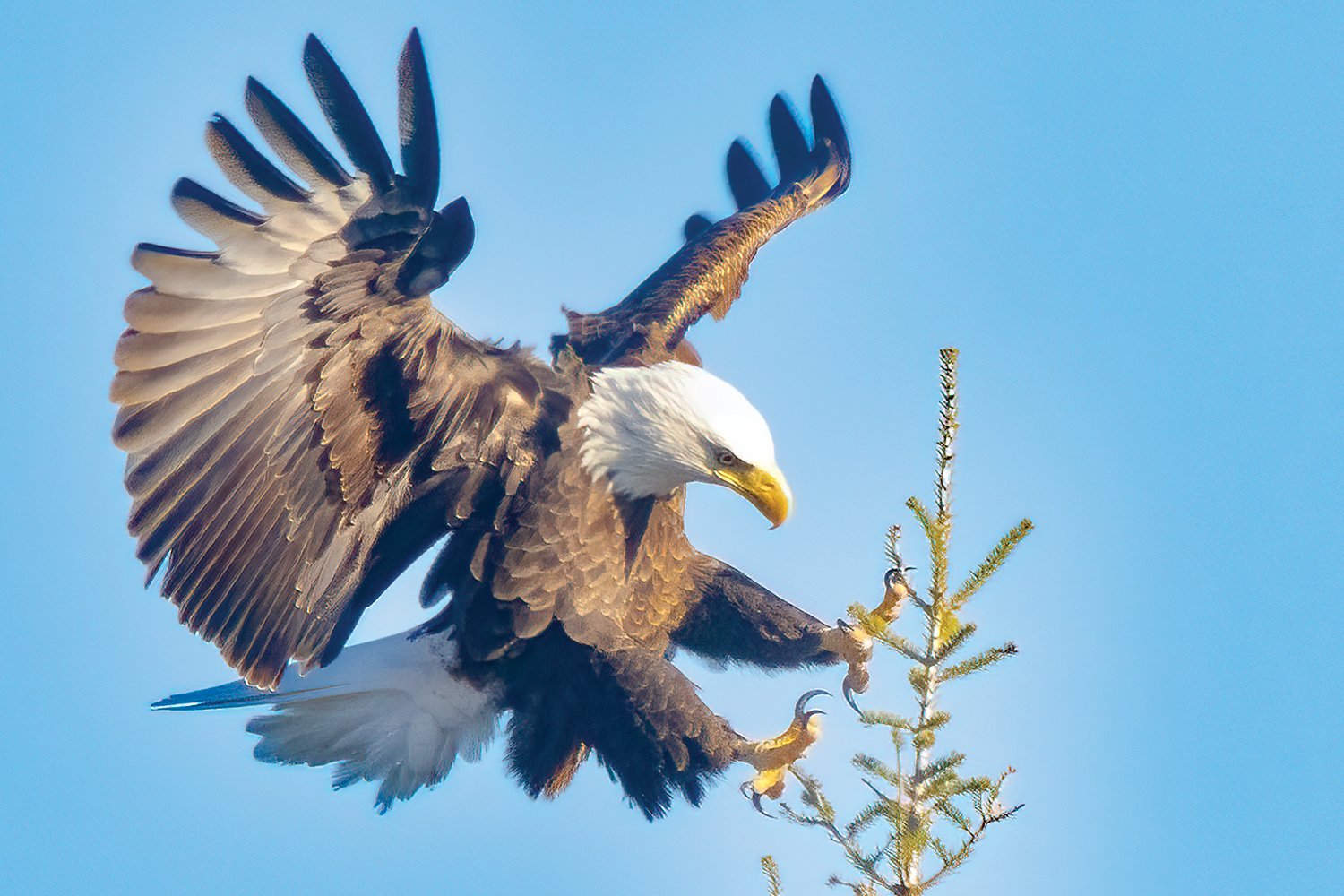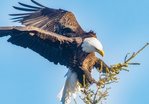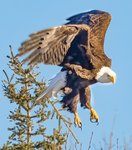Support the Timberjay by making a donation.
The Eagle has not landed
Thanks to recovery, bald eagles are once again a common sight around the North Country
It’s easy to despair at times about the future of our environment, what with humankind’s insatiable demand for resources, destruction of ocean life, and climate change. Yet it’s …
This item is available in full to subscribers.
Attention subscribers
To continue reading, you will need to either log in to your subscriber account, or purchase a new subscription.
If you are a current print subscriber, you can set up a free website account and connect your subscription to it by clicking here.
If you are a digital subscriber with an active, online-only subscription then you already have an account here. Just reset your password if you've not yet logged in to your account on this new site.
Otherwise, click here to view your options for subscribing.
Please log in to continue |
The Eagle has not landed
Thanks to recovery, bald eagles are once again a common sight around the North Country
It’s easy to despair at times about the future of our environment, what with humankind’s insatiable demand for resources, destruction of ocean life, and climate change.
Yet it’s worth remembering that, sometimes, humans are capable of fixing their mistakes, and there are few better examples of that than the remarkable recovery of the bald eagle.
Humans had been pretty tough on eagles, as we’ve been with most species of wildlife, since the day we figured out how to trap them or shoot them out of the sky. The U.S. Fish and Wildlife Service estimates that the lower 48 states were once home to 100,000 breeding pairs of bald eagles, but by 1963, a nationwide census found just 417 nesting pairs and there was widespread concern that the species was headed for extinction, at least in the lower 48.
While Congress had passed the Bald Eagle Protection Act back in 1940, which had prohibited the killing or possession of bald eagles or bald eagle parts, bald eagles faced a new threat in the post-WWII era from the widespread spraying of DDT. The chemical quickly spread throughout the aquatic food chain in the U.S. and elsewhere and as predators of fish and waterfowl, bald eagles took the brunt of the impact. The chemical led to thinner egg shells for eagles and other fish-eating birds, like pelicans and cormorants, which led many of them to break during incubation. The impact on reproduction was enormous and that’s what sent the populations to dangerously low levels.
When the Environmental Protection Agency banned the use of DDT in the U.S. in 1972, bald eagles began a remarkable recovery. With legal protection against the once senseless slaughter of eagles and the elimination of a deadly toxin from the environment, the stage was set and bald eagles responded, although it still took a few decades for the decimated populations to rebuild. By 1995, the bald eagle was reclassified in most of the lower 48 states from endangered to threatened, indicating that the species was back from the brink. Here in Minnesota, the bald eagle was never classified as endangered (it was originally set as threatened), reflecting the fact that a good portion of the remaining eagle population was found in Minnesota.
By 2007, the Fish and Wildlife Service estimated there were nearly 10,000 nesting pairs of bald eagles in the lower 48 and the species was formally removed from protection by the Endangered Species Act. Eagle populations have continued to grow dramatically since then, and by 2019, federal biologists put the bald eagle population at a whopping 71,467 breeding pairs and nearly 317,000 individual birds.
In our area, bald eagles have gone from a rare sighting in the 1970s and ‘80s to seemingly everywhere these days. That’s not a surprise given that Minnesota now has the largest population of bald eagles in the lower 48 states, with about 10,000 nesting pairs in addition to at least that many non-breeding birds. Most of the birds you see this time of year are non-breeders that are on the move as spring advances and many of them are showing up along roadsides, where they’re feeding on roadkill. Breeding pairs have been on their territories for several weeks already, and are likely incubating eggs by now, but hopefully don’t have hatched young yet. Generally, eagles don’t want to have nestlings to feed before the ice goes out, since ice sharply limits their access to fish and other potential food sources.
Breeding pairs typically mate for life and because they are relatively long-lived, with adults averaging 20-25 years in the wild, pairs have numerous chances to reproduce. Younger pairs often struggle their first few years before they get the hang of it. I’ve been watching what I assume to be a young pair of eagles that has nested for at least four years on Lost Lake, near my house, without fledging any young. Twice, storms blew down their nests, but now they’ve utilized a sturdy white pine, so I’m expecting they might finally have figured this whole nesting thing out and I’ll be watching their progress over the summer. After all, bald eagles may be common these days, but that doesn’t mean they aren’t still spectacular to have around.











